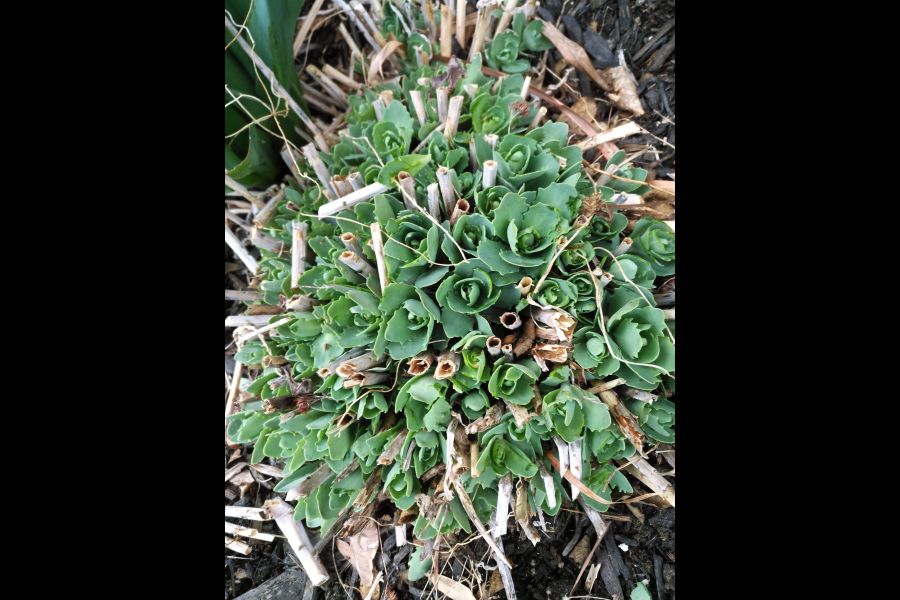In the fall, I like to leave any perennials that have interesting seedheads and textures, such as the ornamental grasses, to add interest to the winter garden.
Now is the time to cut back and clean up any old growth before the new growth begins to emerge from the ground. Simply use your secateurs or shears and cut back last year’s dead stalks and leaves back to a one- or two-inch stubble.
It is also the time of year for dividing some of your perennials. Dividing your perennials is necessary to keep your garden healthy, thriving and under control. Let’s take a closer look at these three reasons to divide your perennials.
REJUVENATION: The first reason is to rejuvenate older plants. As some perennials age, you may see that the clumps will have started to die out in the middle with only new growth appearing on the outer edges of the clump.
Or you may have noticed the plant may not be blooming as heavily as it used to. These are all signs that the plant is losing its vigour and needs to be dug up and divided to thrive again.
SIZE MATTERS: The second reason for dividing perennials is to control the size of the plant. Some perennials grow quicker than others, such as black-eyed susans and shasta daisies, and, if left unattended, they can soon start to take over your garden. By dividing the clump into smaller sizes, you can keep the plant size under control.
MORE PLANTS: The third reason to divide your perennials is to propagate more plants. Dividing perennials is an easy and inexpensive way to increase the number of plants in your garden, especially new areas. It is also a great way to share plants with friends, family or neighbours.
With that said, there are a few perennials that do not like to be divided at all. For example: baptisia, bleeding heart, butterfly weed, Christmas rose, lavender and poppies.
Now that we know why we need to divide perennials, the next question is: when is the proper time to divide? The general rule of thumb of when to divide is:
* Divide spring and summer flowering perennials in late summer or fall. e.g. irises, salvia.
* Divide late-summer and fall blooming perennials in early spring. e.g. sedums, coneflowers and mums.
Steps to follow
when dividing perennials
1. When possible, plan to divide your perennials on an overcast day with showers in the forecast. This will greatly help the plant recover from the roots being damaged. It would also be helpful to thoroughly water the plants a day prior to dividing.
2. When dividing in the spring, wait until new shoots are about one inch tall. If dividing plants in the fall, prune plants back to just a few inches tall.
3. Using a spade or garden fork, dig into the soil about four to six inches beyond where the shoots emerge. Dig all around the clump then pry up on the rootball. Do not try to cut through the roots while the plant is still in the ground. When you do it that way, you have no way of knowing how much root you will be getting and could be wasting parts of the plant.
4. Lift out the entire clump as completely as possible and sit it on top of the ground or on a tarp.
5. Using a sharp spade or knife, gently cut through the roots, dividing the clump into as many pieces as desired. Each division should have at least three to five vigorous shoots and a healthy supply of roots. If the centre of the plant has died out, divide the living, outer portions into smaller clumps and throw out the dead, centre portion.
6. Enrich the soil in the new planting areas with compost, composted manure or triple mix before planting the new divisions. Fertilize new plantings by scattering a handful of bone meal in the bottom of the planting hole. Bone meal is high in phosphorus, which will help stimulate root growth.
7. Fill in around the plant roots with triple mix or compost. Make sure that the plant is in the soil at the same depth that it was previously – and water well.
Joanne Young is a Niagara-on-the-Lake garden expert and coach. See her website at joanneyoung.ca.











